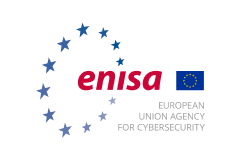Cybersecurity Skills Development in the EU
This report focuses on the status of the cybersecurity education system and the inability to attract more students in studying cybersecurity and to produce graduates with “the right cybersecurity knowledge and skills”. It argues that many of the…
Cyber Europe 2018 - After Action Report
ENISA has compiled all the information gathered during the exercise and produced an after-action report, identifying challenges and main takeaways, and making useful recommendations for the participants.
Foresight Challenges
This report aims to highlight the most relevant foresight methods based on ubiquity or suitability to ENISA’s core needs to adequately address future cybersecurity threats and shape a more secure society. In fact, foresight enables reflection on…
Flash Note: The BASH Shellshock Bug
Last week a serious, remotely exploitable vulnerability was discovered in the widely deployed Bourne Again Shell (BASH). The technical background is analysed by ENISA in a new flash note.
Technical Guideline on Incident Reporting under the EECC
This document describes the formats and procedures for cross border reporting and annual summary reporting under Article 40 of the EECC. Paragraph 2 of Article 40 describes three types of incident reporting: 1) National incident reporting from…
Security Supervision under the EECC
With this report ENISA aims to support EU countries with their transposition, by analysing the main changes to the security requirements and the security supervision under the new rules. The principles of security supervision under the new rules (…
Aspects of Cooperation between CSIRTs and LE - Handbook 2021
This training material is an updated version of the training material Aspects of Cooperation between CSIRT and LE - Handbook, Document for trainers3, that was developed based particularly on the ENISA 2020 Report on CSIRT-LE Cooperation.
Online Tracking and User Protection Mechanisms
ENISA decided to provide a study on online tracking and relevant user protection mechanisms, paying particular attention to user consent, privacy settings and the implementation of the Do-Not-Track (DNT) standard.
Stock taking of information security training needs in critical sectors
The primary objective of this project is to provide a mapping of ENISA’s training program and a strategy to adapt it in the light of the recently adopted EU NIS Directive, catering for the needs of the identified critical sectors.
Reinforcing trust and security in the area of electronic communications and online services
This study provides an overview of well-established security practices, for the purpose of sketching the notion of “state-of-the-art” in a number of categories of measures, as they are listed in ENISA’s guidelines for SMEs on the security of…
Pagination









